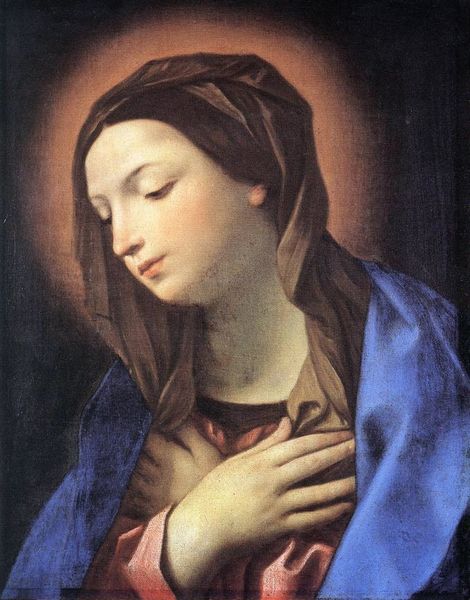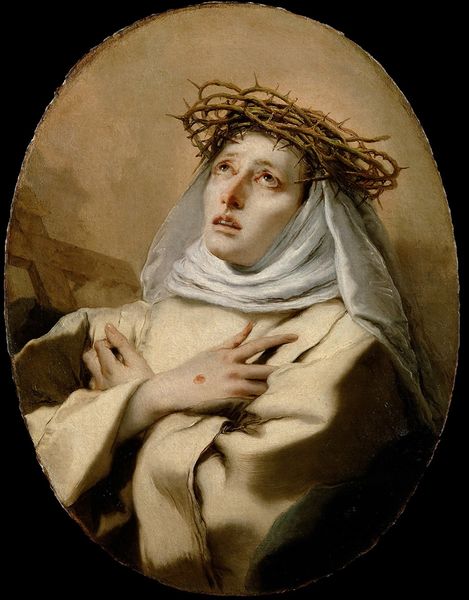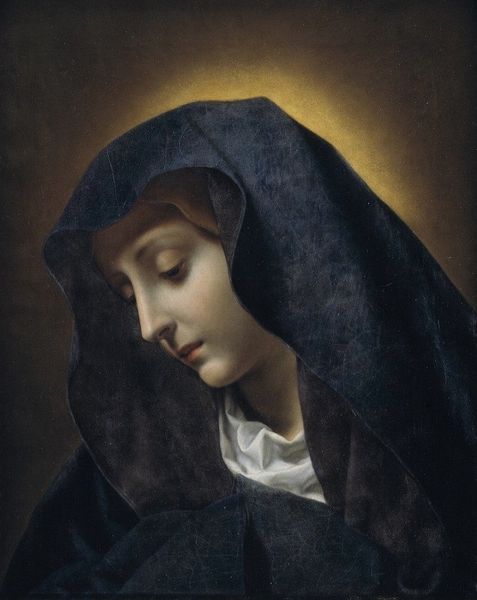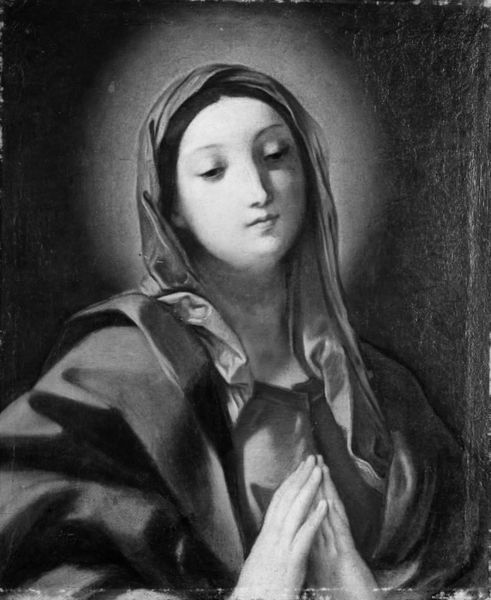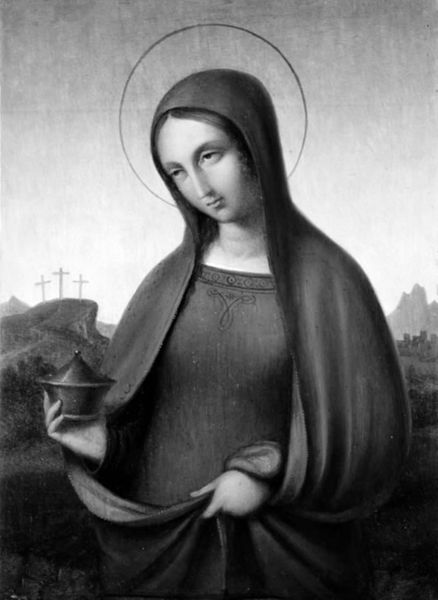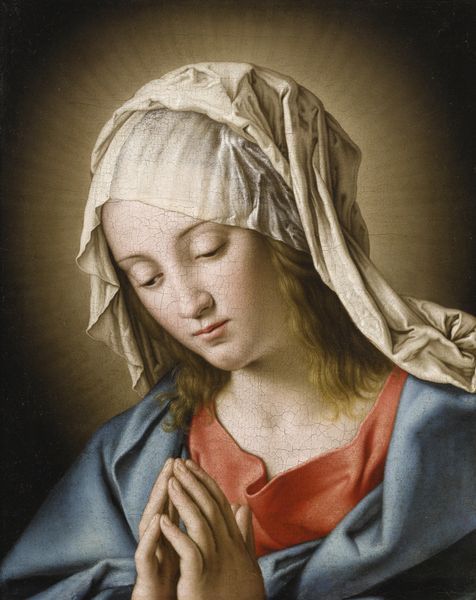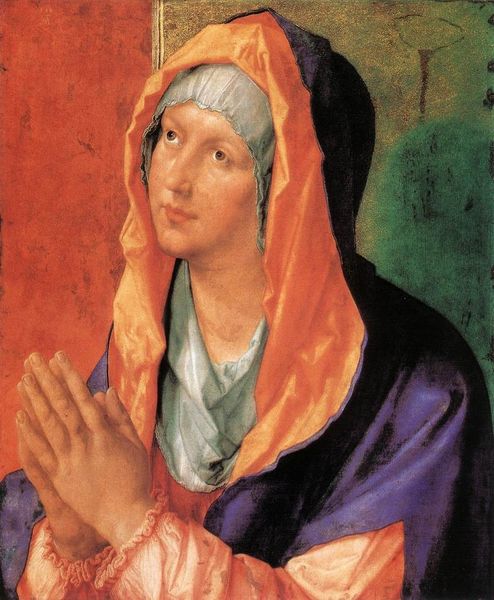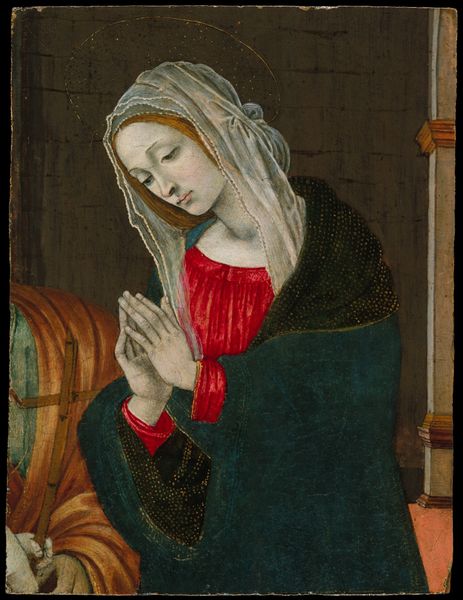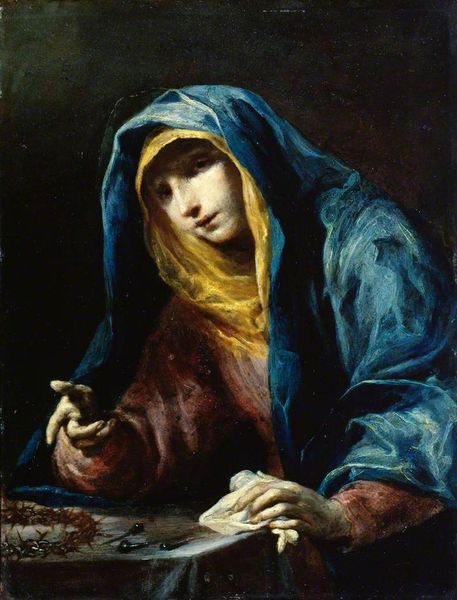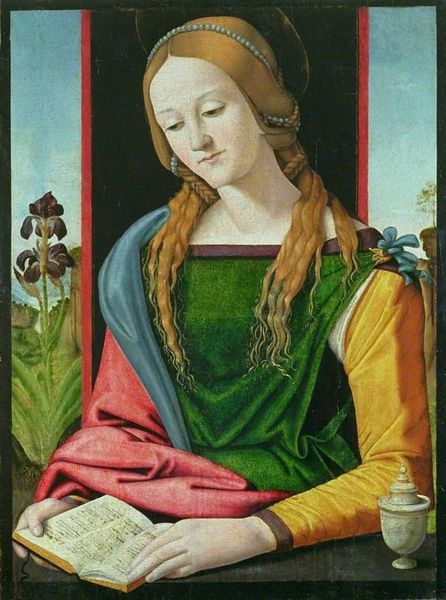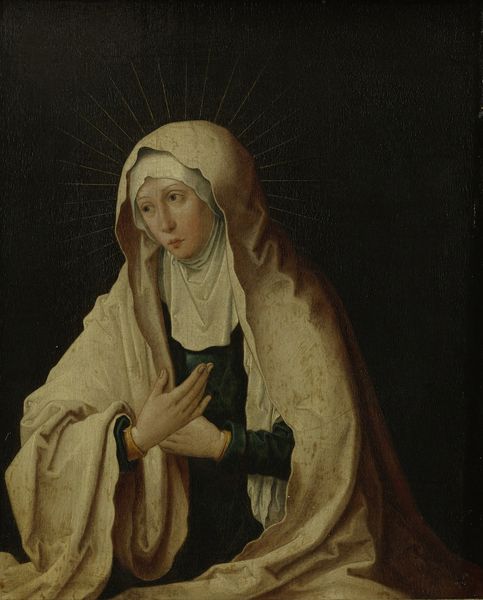
painting, oil-paint
#
portrait
#
allegory
#
portrait
#
painting
#
oil-paint
#
history-painting
#
italian-renaissance
Copyright: Public domain
Curator: Looking at Plautilla Nelli’s "Pained Madonna," what strikes me is the immediacy of grief it conveys. It feels so raw, and personal despite its historical context. Editor: Yes, there is something profoundly intimate about the painting, an unexpected closeness that is only partially achieved via the face depicted. It also sits somewhat uncomfortably with my understanding of Italian Renaissance art. Curator: Can you elaborate? From the perspective of cultural history, this portrayal challenges typical representations of the Virgin Mary. How does the devotional image subvert the iconographic tropes? Editor: Right, well, the typical Madonna, especially from this period, often radiates serenity, even in sorrow. Here, Nelli offers something rawer, more human, by representing her as simply 'pained,' rather than channeling beatific suffering. Curator: It also feels crucial to address that this was created by a female artist within a convent setting. We need to consider what a woman-centered religious community brings to devotional images, where women could reclaim visibility and agency within the constraints placed on them. How does this challenge traditionally patriarchal, religious narratives and representations? Editor: That's fascinating. We need to explore how Nelli negotiated both the established traditions of religious painting and her own position as a woman artist. The composition guides us toward those elements of passion related to grief; like the Crown of Thorns and a chalice holding, what I assume to be, Christ's blood. Curator: It is also very powerful when framed by contemporary gender discourse. Consider that even today, the Virgin Mary’s role is highly policed—often valued most as a mother figure in an overly restrictive lens that refuses all the potential political avenues she opens up, which is all the more noticeable when viewing an artist like Nelli during the Italian Renaissance. What can you take away? Editor: This image certainly urges a re-examination. Its success perhaps stems from how the conventions and its intimate perspective allow Nelli to prompt new dialogues regarding women, faith, and art history. Curator: Indeed, it requires that we keep pushing.
Comments
No comments
Be the first to comment and join the conversation on the ultimate creative platform.
